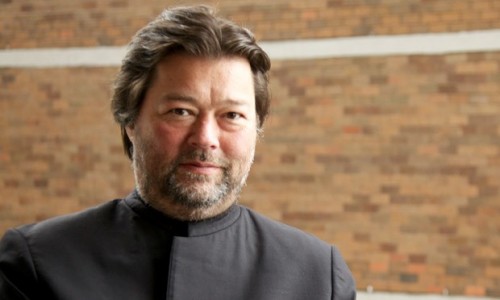 United Kingdom Beethoven and Sibelius: Paul Lewis (piano), Scottish Chamber Orchestra / Joseph Swensen (conductor), City Halls, Glasgow, 15.3.2019. (GT)
United Kingdom Beethoven and Sibelius: Paul Lewis (piano), Scottish Chamber Orchestra / Joseph Swensen (conductor), City Halls, Glasgow, 15.3.2019. (GT)

Beethoven – Coriolan Overture, Op.62; Piano Concerto No.2 in B flat, Op.19
Sibelius – Symphony No.6 in D minor, Op.104; Symphony No.7 in C, op. 105
During a week in which the new 2019-2020 Scottish Chamber Orchestra programme was launched (click here for details), this concert epitomised the variety of the repertoire which this orchestra is celebrated for with its mix of classical Beethoven and late romantic Scandinavian symphonies, underlining the SCO’s innovative nature. Here the SCO’s former principal conductor Joseph Swensen took on two Scandinavian symphonies and the brilliant English pianist Paul Lewis played one of Beethoven’s less often performed concertos.
Few pieces equal the Coriolan Overture (inspired by Heinrich Joseph von Collin’s play rather than from Shakespeare) for with its fiercely dramatic opening bars; Swensen seemed to be like a boxer punching the air and it was almost as good watching him as listening to the music. He has a great sense of timing and brought out all the darkness and colour of this overture. The strings showed their virtuosity and velvety hued tone colour, splendidly led by Benjamin Marquise Gilmore. But certainly, there was little danger in the showmanship of the conductor hindering the marvellous power of Beethoven’s dynamic writing.
The elegiac opening of Beethoven’s Second Piano Concerto was practically in the late Mozart style – but with the toughness and tonal vigour typical of Beethoven – the strings were especially immaculate again, as was the aristocratic playing from Paul Lewis at the keyboard; his playing was pearly and delicious and totally in mood with the music. Like a row of glittering diamonds, his fingers hovered over the keyboard, the notes spinning before us, wholly determined to bring Beethoven’s ideas before his listeners. He had great support from the strings and some sensitive woodwind, and Lewis fashioned a wonderfully nuanced cadenza before the close of the Allegro con brio movement. The gorgeous playing – in this youthful work of Beethoven – had gentle, stately grace and often spellbinding chromaticism from the soloist. In the Rondo boisterous ideas on the piano intermingled gamely with the strings; it was all playfully joyful before the upbeat conclusion typical of the young composer enjoying life before the difficult trials which awaited him.
It is unusual to hear two symphonies by Sibelius one after another, and here were two of the most multifaceted ones by the great Finnish master. In the opening Sixth, the chilling idea introduced by the strings, was by turns emotionally remote – and in its polyphony – nimbly striking in its Nordic tranquillity. Swensen was like a magician wielding his arms and cajoling the notes from his musicians. During the opening movement one had the impression of a new morning awakening before one’s eyes, with each section joining in the naturally sounding Allegro molto moderato, and ever so slowly life began from the misty kernel of Sibelius’s idea. In the second movement, Allegretto moderato, the tempo didn’t seem quite right, not flowing as it should and some momentum was lost, whilst in the third movement, the appropriate tempo and mood returned with marvellous music-making in the woodwind and brilliant brass, evoking the night in its dusky tones. Through ever so subtle low strings, the polyphony came to the fore again from the woodwind and a great clarion call from the horns. The theme of returning home to the opening key brought a satisfying feeling to the ending.
As if from the depths of the world the music of the one-movement Seventh began, yet without continuing the narrative of the Sixth for we now entered a quite different world: a revelatory idea was heard in the woodwind, especially the flute of Tom Hancox, and there was heavenly music from the strings. Swensen attained a sense of proportion and we heard world-class intonation from the clarinet of Maximiliano Martin, that was equalled by Emily Hultmark on bassoon, allowing a measured momentum to the glowing final bars, as if these were the dying glowing embers of a forest fire. For in Sibelius’s last symphony, there was nothing more for him to say, and so it seemed from the closing bars of this still underrated masterpiece.
Gregor Tassie
